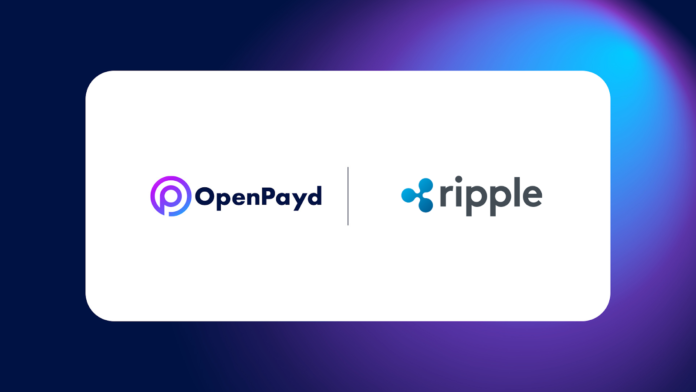- Ripple and OpenPayd have joined forces to make stablecoin payments easier for businesses.
- The RLUSD stablecoin is now backed by a powerful fiat payment system.
- This move could push more companies toward blockchain-based financial tools.
In a move that could shape the future of digital finance, Ripple has partnered with fintech firm OpenPayd to boost the utility and reach of its newly launched RLUSD stablecoin. The collaboration is focused on delivering a seamless, enterprise-ready payment infrastructure that supports real-time settlement using RLUSD and fiat currencies like the euro and British pound. This partnership marks a significant step toward integrating blockchain-based assets with everyday business transactions in a secure and scalable way.
Why This Partnership Matters
Ripple has long positioned itself as a leader in blockchain payments, with a strong focus on speed, efficiency, and cross-border settlement. By introducing RLUSD, a stablecoin pegged to the US dollar, Ripple is now aiming to offer businesses a more stable and reliable digital asset that can be used across different financial environments.
The partnership with OpenPayd adds a crucial layer of fiat infrastructure to this vision. OpenPayd specializes in embedded finance services and already offers powerful APIs and payment solutions for businesses across Europe and beyond. Through this alliance, Ripple will be able to leverage OpenPayd’s fiat rails, enabling enterprises to mint and redeem RLUSD directly using real-world currencies like the euro and pound. This real-time conversion and settlement process helps bridge the gap between traditional finance and the fast-moving world of digital assets.
Enterprise Use Cases Take Center Stage
While stablecoins have become increasingly common in the world of retail crypto and DeFi, Ripple is targeting a different audience with RLUSD. The focus is squarely on businesses that need trusted, transparent, and instant payment solutions. With OpenPayd in the mix, these companies now gain access to a smoother user experience when moving between digital and fiat currencies.
For instance, a global business can now pay its suppliers or employees across borders using RLUSD without worrying about the delays and fees often seen in traditional banking systems. Thanks to OpenPayd’s fiat support, they can instantly convert that RLUSD into local currencies like euros or pounds, making the process efficient and cost-effective.
Ripple’s Long-Term Vision for RLUSD
Ripple’s entry into the stablecoin market was a strategic decision that aligns with its mission to improve how money moves around the world. RLUSD is designed to be fully backed by cash and short-term US government securities, ensuring trust and transparency. The stablecoin is already integrated with Ripple’s core payment platform, Ripple Payments, and is being rolled out across multiple blockchains, including the XRP Ledger and Ethereum.
This new partnership strengthens Ripple’s position in the enterprise stablecoin market. OpenPayd not only brings strong fiat payment infrastructure but also regulatory readiness, making it easier for Ripple to serve businesses that require compliance and risk management. The goal is to make stablecoin payments as simple and secure as traditional bank transfers, but with the added benefits of blockchain: faster processing, global access, and lower costs.
A Growing Ecosystem for Digital Payments
The broader crypto market has seen a growing interest in enterprise use cases, especially as regulatory clarity improves in key regions like the UK and EU. With this partnership, Ripple and OpenPayd are responding to real market needs. Businesses today want stability, flexibility, and compliance when adopting digital assets. RLUSD, backed by Ripple’s infrastructure and OpenPayd’s fiat capabilities, offers just that.
This collaboration could also inspire more traditional companies to explore digital payments. As confidence grows in stablecoins that are well-regulated and transparently backed, mainstream adoption is likely to increase. Ripple’s approach—combining blockchain innovation with real-world usability—is aimed at speeding up this shift.
What This Means for the Future of Payments
The alliance between Ripple and OpenPayd represents more than just a technical integration. It reflects a larger shift in how financial services are evolving. Businesses are no longer content with slow and expensive international transfers. They want digital solutions that work in real time, offer better control over funds, and are easy to integrate into their existing systems.
By combining RLUSD with OpenPayd’s infrastructure, Ripple is offering a glimpse of what the future of payments could look like: instant, affordable, and built for global commerce.


